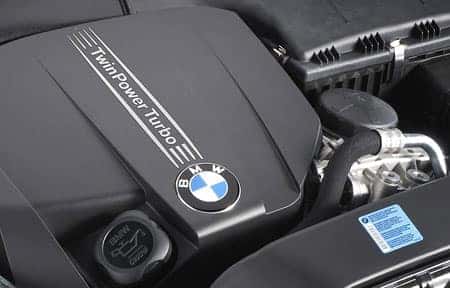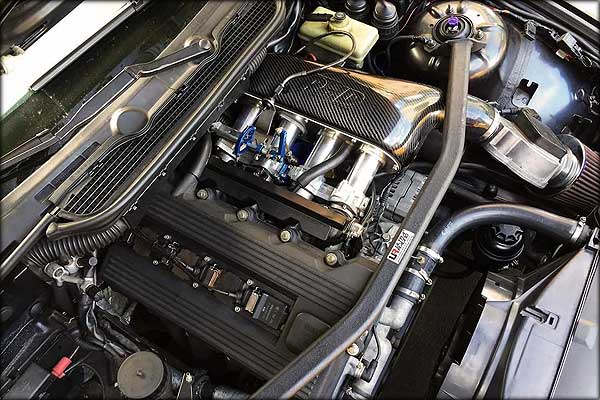A Comprehensive Guide to Recognizing BMW Engine Specs
A Comprehensive Guide to Recognizing BMW Engine Specs
Blog Article
Checking Out the Development of Burning Engines in Modern Transport Equipments
As we browse the landscape of contemporary transportation, the advancement of burning engines stands as a testament to human ingenuity and design expertise. The interplay of background, modern technology, and environmental concerns in forming the trajectory of combustion engines creates a story that is both compelling and informative.
Early Beginnings of Combustion Engines
Just how did the principle of combustion engines very first emerge in the very early phases of transportation growth? The roots of combustion engines can be mapped back to the 17th century when the principles of inner combustion were first checked out.
The breakthrough minute came with the creation of the initial successful gasoline-powered engine by Karl Benz in 1885 - bmw engine. This engine led the way for the advancement of the modern-day auto, transforming transport systems worldwide. Succeeding developments by Nikolaus Otto and Gottlieb Daimler additionally improved burning engine technology, causing the automation of autos and the rapid growth of the transport sector
These very early burning engines were defined by their simplicity and effectiveness, laying the foundation for the complicated and powerful engines used in modern transportation systems. The evolution of combustion engines has actually contributed fit the means we take a trip and deliver products, marking a considerable milestone in the history of transport growth.
Change to Internal Burning Innovation
The shift to internal burning modern technology noted a critical shift in the advancement of transport systems. This shift started in the late 19th century, with creators like Nikolaus Otto and Gottlieb Daimler establishing the first effective interior burning engines. These engines revolutionized transport by offering an extra reliable and effective choice to heavy steam engines and electric motors.
One of the essential benefits of interior combustion engines was their capacity to be reduced to suit vehicles, leading to the advancement of cars and motorbikes. This change from bulky, stationary engines to small, mobile ones led the method for the modern transportation systems we see today.
The change to interior combustion innovation also stimulated innovations in gas modern technology, resulting in the development of fuel and diesel as primary fuel resources for automobiles. This change not just made transportation a lot more obtainable to the masses yet likewise laid the structure for the oil and gas industry to come to be indispensable to worldwide economic climates.
Impact of Combustion Engines on Transport
The adoption of burning engines in transport systems militarized an extensive change in the performance and speed of international mobility. Burning engines revolutionized transport by giving a flexible and reputable resource of power for numerous vehicles, including autos, ships, planes, and vehicles. This technology significantly boosted the capacity for items and people to relocate over fars away in much shorter timespan, causing raised connectivity between regions and countries.
In addition, the prevalent usage of burning engines has had a significant influence on financial growth. The capacity to carry products effectively has actually stimulated profession and commerce, enabling companies to expand their markets and reach customers worldwide. This has actually promoted financial growth and globalization, as items can now be delivered faster and in larger amounts than ever previously.
Nevertheless, the environmental impact of burning engines can not be forgotten. The burning of fossil gas has actually resulted in air contamination and greenhouse gas emissions, adding to environment change and posing wellness dangers to populaces. bmw engine. Therefore, there is an expanding emphasis on creating alternative propulsion modern technologies to alleviate these negative impacts and create a much more sustainable future for transport
Developments in Burning Engine Design
One remarkable advancement is the advancement of turbocharged engines, which make use of exhaust gases to drive a turbine that presses incoming air, allowing for more gas to be burnt, resulting in raised power result without a substantial rise sites in engine size. Variable valve timing systems have additionally transformed engine layout by maximizing air movement at various engine rates, improving both power and effectiveness. These advancements jointly contribute to the continuous enhancement of combustion engines in contemporary transportation systems.
Future Trends in Combustion Engine Development
With innovation advancements driving continual technology, the future of burning engine advancement is poised to change transport systems worldwide. One of the vital trends in combustion engine development is the press towards greater performance and decreased emissions. Suppliers are investing greatly in r & d to improve engine performance while fulfilling strict ecological guidelines. This includes the assimilation of advanced gas injection systems, boosted turbocharging methods, and using lightweight materials to enhance gas usage and reduce carbon discharges.
One more noticeable fad is the adoption of crossbreed technologies in burning engines. Crossbreed engines combine conventional burning modern technology with electric power, using boosted fuel effectiveness and lower emissions. As the vehicle sector changes towards electrification, hybrid combustion engines are seen as a transitional option that links the gap between conventional vehicles and completely electrical ones.
In addition, the assimilation of smart technologies, such as man-made knowledge and information analytics, is anticipated to play a substantial duty in the future of burning engine development. These innovations can enhance engine efficiency in real-time, causing a lot more reliable burning procedures and improved general automobile efficiency. Welcoming these future patterns will certainly not only drive advancement in combustion engine advancement however likewise add to a more environmentally pleasant and lasting transportation environment.

Final Thought
In verdict, the advancement of burning engines in contemporary transportation systems has actually been noted by significant advancements in modern technology and layout. From the early beginnings of burning engines to the shift to interior combustion modern technology, these engines have had a profound impact on transport.
The roots of burning engines can be traced back to the 17th century when the principles of inner combustion were first discovered. These engines changed transportation by offering an extra effective and effective alternative to vapor engines and electric motors.

Report this page